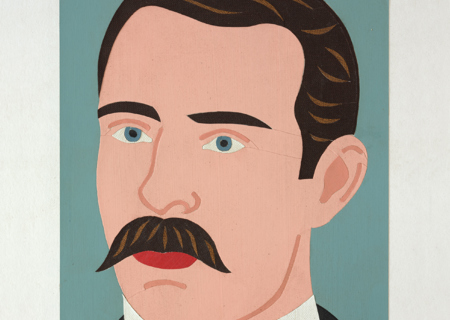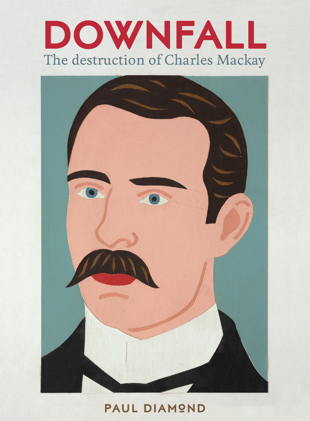David Herkt has reviewed Paul Diamond’s recent book Downfall: The destruction of Charles Mackay for Canvas:
‘New Zealand provincial sexual scandals don’t often end with a death on the streets of Berlin during a riot between police and communists. On May 3, 1929, Charles Mackay, the former long-time mayor of Whanganui, was shot dead by a police sniper. Mackay had been working as a news stringer for the London Daily Express. Berlin police would ultimately produce three different versions of the fatal circumstances, but the events were also the finale of a life that involved many other complexities.
Scandals of the past inevitably explain the present, Paul Diamond’s intriguing Downfall: The destruction of Charles Mackay can still be read as a revelation of New Zealand life and attitudes, even a century later. Diamond began working on the book in 2003 and it as involved research trips to both the United Kingdom and Berlin, as well as many hours in Wellington archives. The story contains mysteries that are often as revealing as many answers uncovered for the first time.
Mackay was a lawyer who had been elected six times to the Whanganui mayoralty. The projects he championed include many that are still associated with the city, including the Sargeant Gallery which Mackay initiated and saw through to completion. He had a vision for Whanganui which included an improved port and better transport. He also had his enemies.
On may 15, 1920 a chair came flying through the first-floor window of Mackay’s legal office. There were several shots. Those who rushed up the stairs found a wounded returned serviceman, 24-year-old Darcy Cresswell, who claimed the mayor had shot him.
The mysteries start immediately. The young Cresswell had only arrived for a visit to the city a few days before the shooting. He and Mackay had not known each other previously, yet dined together that first night and subsequently. Mackay had also invited Cresswell for a private tour of the newly opened gallery.
At first Mackay claimed the gun had gone off by accident, but then he pleaded guilty to a charge of attempted murder. The court was presented with Cresswell’s claim that the mayor had propositioned him, and evidence that the married Mackay had previously sought treatment for his homosexuality. The “cousin” that Cresswell claimed to be visiting in Whanganui was never named or interviewed. The “confession” that Cresswell demanded Mackay write was never produced.
The role of the Whanganui RSA in the scandal was murky. It had its own agenda. There would also be the fact that Cresswell was exclusively fay in later life. There were hints of blackmail.
Mackay was sentenced to 15 years’ imprisonment but was released in seven, leaving New Zealand on a boat the very next morning. He went to London, where he worked in advertising before going to Berlin, where he met his end.
Diamond’s dogged research unearths many intriguing facets to the story. It is profusely illustrated. His style can sometimes labour under the weight of structural decisions, but it is a narrative that will ultimately fascinate a reader. It firmly links New Zealand to a wider world and the sexual currents that would evolve so dramatically in the following decades. It is a valuable and insightful book about Mackay’s life that contextualises and links new information in ways that will continue to be of value.’


